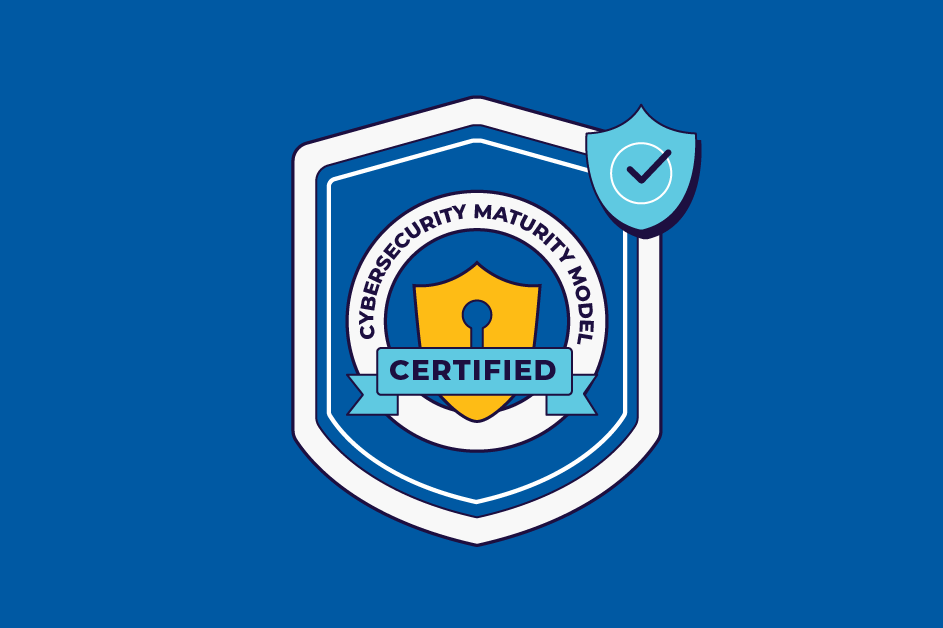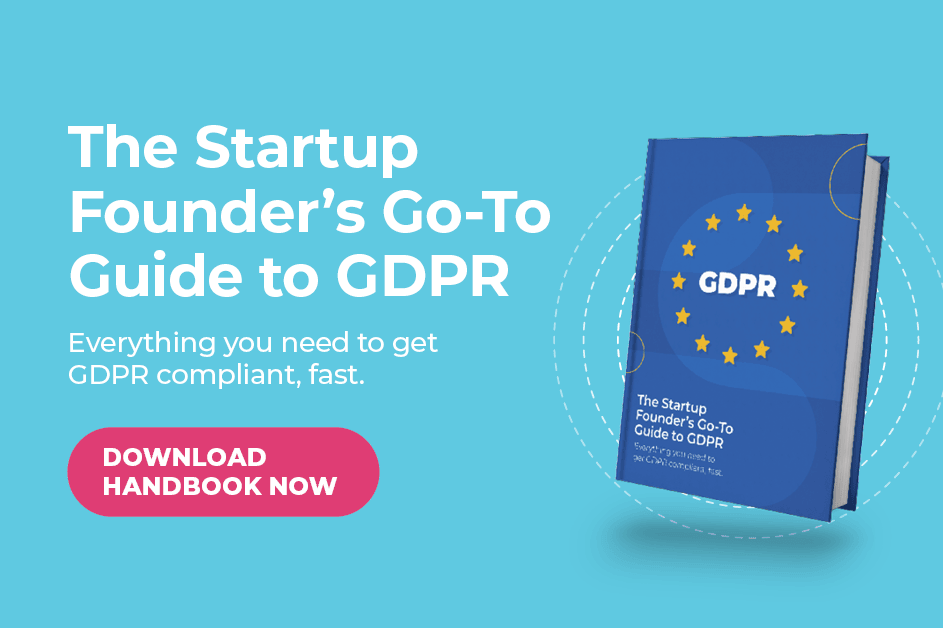You know things are getting serious when the Department of Defense (DoD) gets involved, and that’s exactly the case with getting Cybersecurity Maturity Model Certification (CMMC) certified. But no worries, just because it’s serious doesn’t mean it has to be daunting or complex.
Here’s what you need to know about getting CMMC certified as a contractor within the Defense Industrial Base (DIB).
Understanding CMMC
The Cybersecurity Maturity Model Certification (CMMC), a framework created by the U.S. Department of Defense, aims to enhance information security compliance for companies in the defense industrial base (DIB).
From a high-level perspective, it is a U.S. Department of Defense (DoD) program that applies to Defense Industrial Base (DIB) contractors, ensuring that they properly protect Controlled Unclassified Information (CUI) and Federal Contract Information (FCI).
Is that you? Let’s check.
Am I Subject to CMMC Compliance?
Simply put, if you’re an individual or entity within the DoD supply chain, you’re most likely subject to mandatory CMMC compliance. This includes all contractors who interact with the Department of Defense and all subcontractors.
However, this usually shouldn’t come as a surprise, as the security requirements are usually incorporated into the contracts with the DoD.
Why CMMC Certification Matters
Ultimately, the CMMC framework was created in order to strengthen the cybersecurity posture for organizations within the DIB. Its primary objective is to protect Controlled Unclassified Information (CUI) and Federal Contract Information (FCI) that moves between parties. However, that doesn’t mean it doesn’t hold significant business value.
Failing to comply with CMMC requirements can lead to legal consequences, including the loss of existing contracts and eligibility for future contracts with the DoD. It’s vital for contractors to understand the legal ramifications of non-compliance to fully grasp the importance of obtaining CMMC certification.
The Benefits of Getting CMMC-Certified
Getting CMMC certified is as much a data and security decision as it is a business opportunity. Here are some of the core benefits:
- Gain access to government contracts:
Being CMMC certified holds valuable growth opportunities and opens up your business to take on greater partnerships within the defense industry. By showcasing that you adhere to the highest security level, your business takes a proactive approach to information security as well as business growth, as opposed to missing opportunities due to playing compliance catch-up.
- Enhanced data security:
There’s no room for uncertainty when it comes to critically classified and sensitive information. A CMMC certification ensures a higher level of data security. It establishes a structured approach to safeguarding sensitive information and reducing the risk of cyber threats, data breaches, and unauthorized access.
- Build reputation and trust:
Data risks and threats are inevitable. However, due diligence isn’t always granted when doing business. Thankfully, your CMMC demonstrates a commitment to cybersecurity and compliance. It can enhance the business’s reputation, instilling trust among clients, partners, and stakeholders, especially in industries where data protection is critical.
Evidently, it’s not something to take lightly – and the consequences of non-compliance and negligence can be severely damaging. So, on that note – how can organizations obtain their CMMC certification?

5 Steps to Obtain CMMC Certification
Step One: Identify Your CMMC Level
Under CMMC 2.0, there are now only three levels of certification, focusing on increasing levels of cybersecurity maturity. Understanding the CMMC levels is essential to tackling the certification process. It’s also important to note that requirements may vary on a contractual basis depending on the criticality and sensitivity of the data being handled. Nevertheless, at the very least, all contractors must obtain a minimum level one CMMC certification. Level one CMMC entails all contractors who process Federal Contract Information (FCI).
Overall, CMMC 2.0 runs on a three-tiered model. These three levels provide a framework for organizations to implement cybersecurity practices at progressively higher levels. Once you’ve confirmed which level applies to your organization, you can continue on your way to CMMC compliance.
Step Two: Define Your FCI & CUI Scope
Fortunately, the DoD only considers the parts of your organization that come into contact with FCI and CUI to be “in-scope.” Due to this, it’s imperative that you spend enough time tracking and assessing the flow of FCI & CUI and confirm the scope for CMMC compliance. To better define your scope, it’s important that we look at what exactly FCI and CUI entail.
- What is Federal Contract Information (FCI)?
FCI involves all non-public information generated or provided during a government contract that, although not as sensitive as CUI, should still remain confidential.
- What is Controlled Unclassified Information (CUI)?
CUI is critical government-related information requiring safeguarding, which, if lost or breached, could pose a national security risk.
Step Three: Conduct a Self-Assessment
Self-assessments are critical to understanding your security posture, collecting evidence, and preparing for certification. This should include conducting a gap analysis to find gaps and prioritize remediation.
For level one CMMC certifications, self-assessments will suffice to meet CMMC Level 1 requirements (but not so quickly. You still need your SSP); therefore, it’s quintessential that your self-assessments are conducted thoroughly. As per CMMC requirements, contractors are also required to conduct annual self-assessments, as well as annual affirmation from a senior company official that the company is meeting requirements.
While self-assessments are crucial, it’s often beneficial to seek external expertise. Professional consultants or cybersecurity firms can provide valuable insights and help ensure that your self-assessment is thorough and aligns with CMMC requirements.
Step Four: Create a System Security Plan (SSP)
Now that you’ve confirmed your CMMC level and started aligning against the required security practices and collecting evidence, it’s time to start creating and establishing your System Security Plan (SSP). Your SSP is a collection of documents and evidence, all of which describe and prove how your company has implemented the security practices. It’s important to remember that your SSP should be flexible and adapt as you improve your security posture. Level one, listen up: Although the DoD does not ask you to submit this document for CMMC Level 1, you are still required to have one. For the remaining level certifications, your SSP will stand as the quintessential blueprint for certification.
Step Five: Let’s Get Certified
Once you’ve reached this point, you should have already done most of the heavy lifting and nitty-gritty (hopefully not by yourself, by the way). The next step on our to-do list is getting certified. If you’re aiming for CMMC Level 2 certification, you’ll need to work with a C3PAO from the CyberAB Marketplace.
If you’re aiming for CMMC Level three certification, you’ll need to undergo a government-led assessment. Your auditor will check out your SSP, look into the proof you give, and chat with folks in your team to give you the thumbs-up for certification.
If you haven’t done everything needed yet, the DoD might let you use a temporary plan or, in rare cases, ask for a pass. Your certification from an outside group or the government will be good for three years. After that, you’ll have to start from scratch again. But if you’ve set up a process that follows the rules and has proof, future certifications should be a lot simpler.
Awesome – you are CMMC certified! Now what? Getting certified is one thing, but maintaining continuous compliance is a whole other ballgame. Fortunately, it’s one we play extremely well. Get (and stay) CMMC compliant faster with Scytale.
Conquer CMMC with Scytale
Our automation platform now supports CMMC. This lets you handle all your CMMC tasks in one spot: collecting proof automatically, using CMMC-ready policy templates, connecting different frameworks, and keeping an eye on controls non-stop.
Ready to fast-track your CMMC compliance?
Want to chat to an expert first? No stress – we’ve got your back.
Your dedicated compliance pro will guide you step-by-step of the audit-readiness process, fully preparing you to ace your audit.











